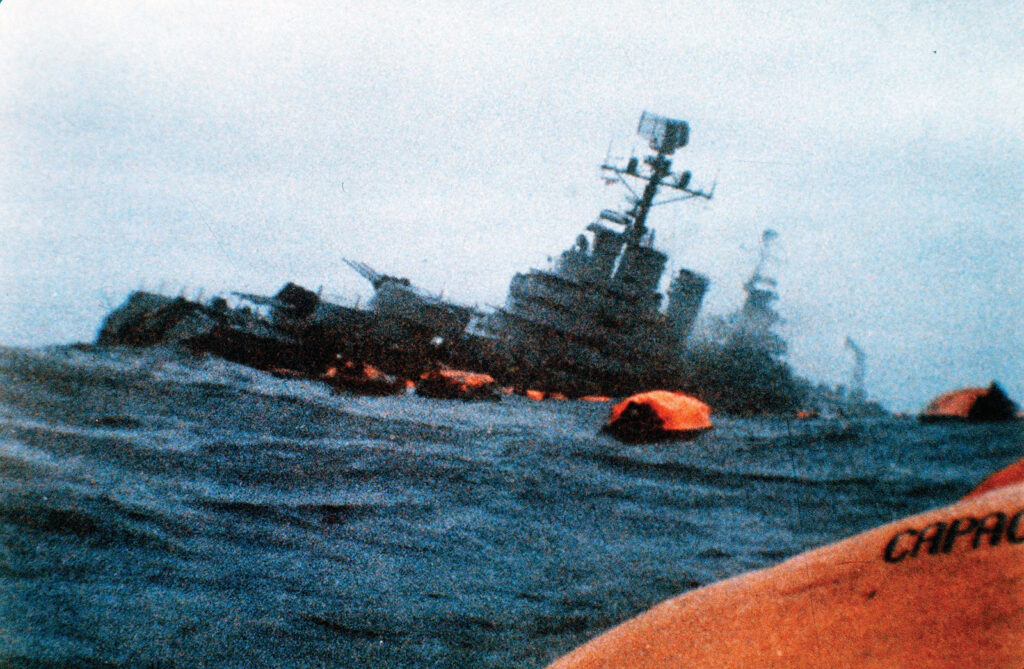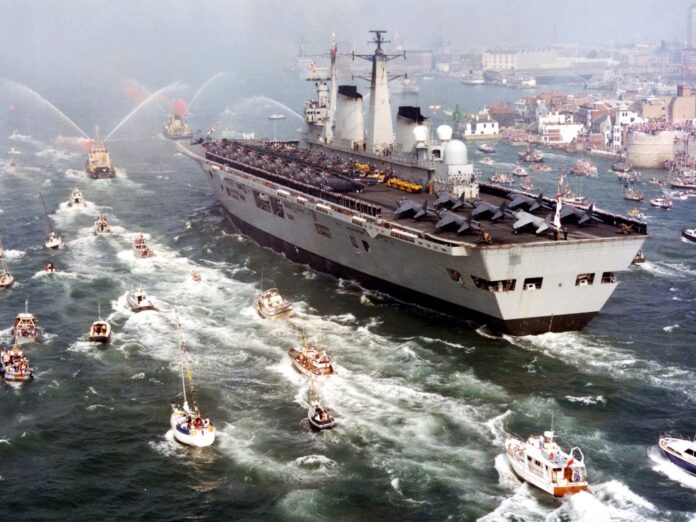The Falklands Islands are situated 8,000 miles from Great Britain. The nearest useable land base for the British was Ascension Islands, 4,000 miles away from the Falklands. The Falklands War started on 2 April 1982, when Argentine forces invaded the undefended Falklands Islands and seized the capital of Stanley. The British task force (2 aircraft carriers, 23 destroyers, and frigates, 6 submarines, 8 large amphibious-warfare ships, dozens of support ships) set sail three days after to retake the islands. The conflict between Great Britain and Argentina is a modern-day example of a joint amphibious force achieving operational access in a defended environment.

The Falklands War (Operational Corporate) occurred when the world was mired in the Cold War. The British concentrated on the European theatre and withdrew and downsized their force across the globe to meet the Soviet threat. The Argentineans took advantage of this situation and invaded the Falkland Islands to reach a political settlement before the war broke out. Their assumptions were soon proven wrong after backroom negotiations through Washington failed. This failure caused political infighting within Argentina, which hindered their military from developing a cohesive strategy. Even with the failures in strategy, the British suffered numerous losses in shipping and men by the Argentine air force. If the Argentineans had synchronized their anti-access area denial (A2/AD) assets across the services, then British losses may have been considerably more damaging and altered the outcome of the Falklands War.
British strategy in Falklands War
British strategy had been to gain air and sea supremacy and then proceed with an amphibious assault on the main island. They did neither but landed their troops anyway. The British landing at San Carlos Bay on East Falkland on 21 May 1982 was conducted. However, the British had been unable to obtain the desired degree of sea control in the objective area because of intermittent attacks by Argentine land-based aircraft against British carrier task forces. There were several Midway-like moments when a well-timed Argentine air assault could have turned the tide against Britain.
HMS Hermes and HMS Invincible are the centers of gravity of Task Force
In the Falklands War, the Argentines’ proper operational center of gravity, before the British landing on the Falklands, comprised the two British carrier forces (Hermes, Invincible). Without these carriers and accompanying escorts, the British could not have landed. While the loss on 25 May of the thirteen-thousand-ton containership Atlantic Conveyor, with its embarked aircraft (ten Wessex and four giant Chinook helicopters) and all the tentage for the landing force, was a severe blow to the British effort, that ship was not a center of gravity for the Argentines but one of the British critical weaknesses/vulnerabilities. The aircraft and equipment could be replaced relatively quickly, but not the aircraft carriers.

After the landing, the British 3 Commando Brigade (despite its relatively small size) was the proper operational center of gravity for the Argentine defenders. For the British, the enemy’s operational center of gravity was not the Argentine carrier group, but the land-based fighter-bombers armed with Exocet missiles. After the landing, the operational center of gravity for the British forces shifted to the Argentine troops defending Port Stanley.
Half a dozen submarines could have changed the course of conflict
According to the Argentine Navy operational planners, it would not be possible to defend surface vessels against submarine attacks. The decision was to keep away surface vessels from British submarines. Therefore, it seems clear that, at present, in the oceans adjacent to South America, surface vessels are no actual match for submarines. And one is bound, with this in mind, to question the wisdom of continuing the past policy of the Argentinian Navy, namely emphasizing surface ships. Pursuing this line of thinking, one could speculate that, even if Argentina had possessed four times the number of Type 42 destroyers and missile-armed corvettes (that is eight and 12 respectively and thus a sizeable fleet), the situation would not have been very different. In an encounter with enemy forces, many such vessels would have been sunk by British submarines, in all probability even before being able to engage the Royal Navy’s surface ships. On the other hand, with half a dozen submarines, it would have been possible to inflict heavy losses on the enemy and even frustrate his invasion plans.
The Joint Operational Access Concept (JOAC) is not unprecedented, as learned from a study of the Falklands War. An examination of the lessons learned from the Falklands War supplies commanders with valuable insight for utilizing the JOAC in future amphibious operations. Requirements for amphibious operations should include robust targeting of enemy A2/AD assets and establish basing options within the global commons.

Conclusion
There are eight reasons why the British were successful in the Falklands War, and in large part, these will be keys to victory in any military endeavour. The first was the naval power they could bring to bear, allowing the political and military options. The second was their firm adherence to clear direct objectives. There was no “turning of screws” or incremental creep of what would constitute a satisfactory conclusion once military success became apparent. And towards that objective, there would be a political solution, or there would be a military solution, but whichever, it would be a clear solution. Third, there clear orders given throughout from the political leadership to the military authorities. “Man, and support the fleet,” “Send the force,” “Retake the Falkland Islands.” Within these clear orders, the commander on the scene could plan and execute his operations. The fourth reason was speed: speed of political decisions once the need was clear; the speed of military operations once the political order had been given; the speed of execution once the military orders had been delivered. Fifth was mobility, both afloat and shore. This provided flexible options that allowed British strategy to continue to evolve as the operation progressed, always the best course, constantly the proper sequence. Logistic and training have always been mentioned but warrant mention again. Finally, there was the sheer willingness of the British to take risks. That is a necessary part of the war.



